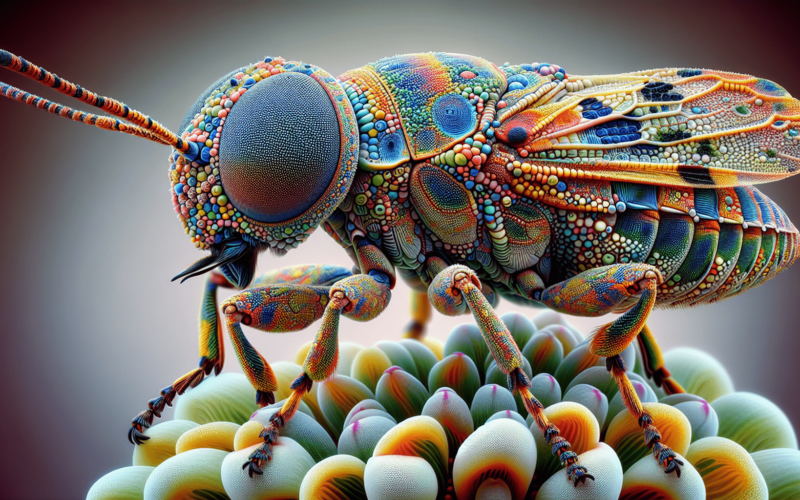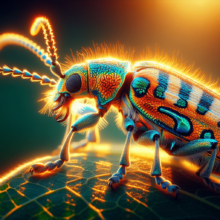Explore the fascinating world of insects and discover their shared characteristics, from their unique exoskeletons to diverse lifestyles. Uncover the commonalities!
Can I Take A Picture Of A Bug And Find Out What It Is?

Have you ever spotted an unfamiliar bug crawling across your backyard and wondered, “What on Earth is that?” You’re not alone! In fact, identifying insects can be a fun and enlightening activity, especially when you can use technology to help you out.

Why Identify Bugs?
Understanding what types of bugs inhabit your surroundings can be useful for numerous reasons. It can help you know whether a bug is beneficial or harmful to your garden, if it poses any risk to your family or pets, or if it’s just a fascinating creature you want to learn more about. Identifying bugs encourages curiosity about nature and enhances your connection with the environment.
The Power of Photography
When you take a picture of a bug, not only do you capture a moment in nature, but you also create a valuable resource for identification. With today’s technology, a simple image taken with your smartphone or camera can lead to identification through various applications and services. Let’s take a closer look at how you can do this.
Using Identification Apps
One of the easiest ways to identify a bug from a photograph is by utilizing identification apps. These apps leverage algorithms, databases, and sometimes even input from knowledgeable users to help you pinpoint what insect you’ve encountered. Here are a few popular apps to consider:
| App Name | Description |
|---|---|
| iNaturalist | A community-driven app where users can upload pictures and receive input from fellow nature enthusiasts. |
| Seek | Created by iNaturalist, Seek uses image recognition to help identify plants and animals. |
| BugGuide | A website focused specifically on insects, where you can upload images for expert identification. |
These apps typically work by analyzing features like color, shape, and size. To increase your chances of getting an accurate result, follow the tips below.
Tips for Photographing Bugs
- Use Good Lighting: Natural sunlight provides the best illumination, making details much clearer.
- Get Close but Stay Calm: Approach the bug slowly to avoid scaring it away. You want to capture a clear image without disturbing its natural behavior.
- Focus on Details: Capture multiple angles focusing on key features such as wings, legs, and body patterns. The more information you provide, the better the identification will be.
- Avoid Flash: Using a flash can create glare, obscuring details. Opt for a well-lit location instead.
Community Input
If apps aren’t yielding satisfactory results, consider turning to online communities. Websites and forums focused on entomology or nature photography can provide valuable insights. Platforms like Reddit or Facebook have groups dedicated to bug identification where you can share your photo and gain feedback from enthusiasts and experts alike.
What to Do After Identification
Once you’ve successfully identified your insect, it’s time to put that knowledge to use. Depending on the type of bug you’ve found, the information can enrich your understanding of your ecosystem or help you decide whether you need to take action.
Beneficial Bugs
Many bugs are helpful to the environment. Here are a few common beneficial insects you might encounter:
| Bug | Benefits |
|---|---|
| Ladybugs | Excellent for controlling aphid populations, which can harm plants. |
| Bees | Crucial for pollination, helping to ensure the growth of fruits and flowers. |
| Praying Mantis | Predatory insects that consume various pests, managing their populations naturally. |
Identifying these bugs means you might want to encourage their presence in your garden. Strategies could include planting flowers that attract them or avoiding chemical pesticides that could harm them.
Harmful Bugs
On the flip side, some insects can wreak havoc on your garden or home. Here are common pests to look out for:
| Bug | Threats |
|---|---|
| Termites | Can cause severe structural damage to wooden buildings and furniture. |
| Aphids | These tiny insects suck the sap from plants, potentially stunting their growth. |
| Mosquitoes | Not only annoying, but they can also spread diseases to humans and animals. |
If you identify a harmful bug, consider researching effective management techniques. Sometimes, natural solutions can be found instead of resorting to pesticides, making it a win-win for you and the environment.
Fascinating Bugs
Not all insects are beneficial or harmful; many are just plain fascinating! Whether you’ve encountered a beautiful butterfly or an unusual moth, learning about these bugs can deepen your appreciation for biodiversity.
The Importance of Ecology in Bug Identification
Understanding the role bugs play in the ecosystem is essential. They are more than just pests; they are crucial components of food webs. You can consider a bug’s behavior, habitat, and interactions to appreciate how it contributes to the environment.
Bug Behavior
Observing how a bug acts can provide clues for its identification. Different species have distinct behaviors that can help you categorize them. For example:
- Swarming: Often indicates flying insects like flies or bees.
- Hiding: Many beetles and moths tend to camouflage in their environments.
- Feeding Patterns: Some bugs may prefer consuming specific types of plants, indicating their classification.
Bug Habitats
Many insects prefer specific habitats. Identifying where you found the bug can provide context to its identification. Here are common habitats:
| Habitat | Common Bugs |
|---|---|
| Gardens | Ladybugs, bees, aphids |
| Woodland | Beetles, moths, and various caterpillars |
| Water Sources | Dragonflies, stoneflies, and various aquatic larvae |
Recognizing the habitat can significantly enhance your chances of identifying the bug correctly.
Safety Considerations
While many insects are harmless, some can sting or bite, causing allergic reactions or pain. Familiarize yourself with potentially dangerous bugs and take precautions when interacting with them.
Common Dangerous Bugs
| Bug | Risks |
|---|---|
| Wasps | Can sting multiple times and cause allergic reactions in some people. |
| Brown Recluse Spider | Its venom can cause severe reactions, including skin necrosis. |
| Black Widow Spider | Known for its venomous bite, which can be life-threatening. |
If you think you may have encountered a dangerous bug, it is best to admire it from a safe distance. Always wear protective clothing if you’re working in the garden or around known bug habitats.
The Joy of Learning
Identifying bugs isn’t just about knowing what they are; it’s also about the thrill of discovering new aspects of nature. Each insect has a story to tell and understanding these creatures can ignite a sense of excitement and wonder in you.
Keeping a Bug Journal
Consider documenting the bugs you find in a journal. You can include:
- The bug’s name (once identified)
- Date and location of the sighting
- Notes about its behavior and habitat
- Sketches or photographs
Keeping a bug journal can lead to a long-term interest in entomology and inspire curiosity about other areas of nature.
Citizen Science and Bug Identification
Participating in citizen science projects can provide a fulfilling avenue for your newfound bug identification skills. Many organizations welcome the help of amateur entomologists to gather data on local insect populations and behaviors.
Projects and Platforms
Look into community science platforms like:
| Platform | Description |
|---|---|
| iNaturalist | As mentioned earlier, it welcomes citizen contributions for extensive ecological data. |
| Butterflies and Moths of North America | A project focusing on tracking butterfly and moth populations across North America. |
| eBird | Although primarily for birds, it encourages reporting all wildlife sightings, including insects. |
Participating in these projects not only aids scientific research but also expands your sense of community and connection with fellow nature enthusiasts.
Conclusion
Next time you find yourself wondering about the identity of an insect, remember that technology and community can assist you in uncovering the mysteries of the bug world. By taking a clear photograph and utilizing the various resources available, you can enhance your knowledge and enjoyment of these fascinating creatures. Every insect tells a story, and by engaging with your local ecology, you can be part of that narrative. So grab your camera, head outside, and start your adventure into the world of bugs!



